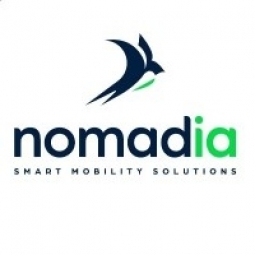Applicable Industries
- Equipment & Machinery
Applicable Functions
- Procurement
Use Cases
- Inventory Management
Services
- System Integration
About The Customer
Bubendorff is a company with over 50 years of experience in the design, manufacture, and sale of electrical rolling shutters. The company has more than 650 employees and holds over 60 active patents. Bubendorff is ISO 9001 and NF Fermetures certified and has more than 50 technicians. The company offers a 7-year warranty on parts, labor, and travel and has more than 4 million shutters under warranty. Bubendorff sells its products to building professionals in France, Belgium, Switzerland, Germany, and Spain.
The Challenge
Bubendorff, a company specializing in electrical rolling shutters for the past 50 years, was facing a significant challenge in optimizing the scheduling of its field technician rounds in France. The company, which offers an exclusive free warranty on parts, labor, and travel, had been making service routes since 1998. Initially, they had 9 technicians who divided the territory among themselves. However, by the early 2000s, callouts were running at approximately 15,000 per year. The era of paper-based routes and disparate tools was no longer sustainable. Bubendorff needed a comprehensive, reliable, and ergonomic solution that would allow it to fully leverage cartography to optimize the management of scheduling appointments for its field technicians.
The Solution
After conducting a market analysis, Bubendorff selected Nomadia and its flagship scheduling optimization solution, Opti-Time. The tool was implemented and customized to include parameters such as callout lead-times (5 days if the parts are in stock, 10 days if a part has to be remanufactured), as well as the technicians’ skill sets and availability. When a user detects a fault with his electric shutter, he contacts his installer who relays the request to Bubendorff’s customer service department. The request is logged by a data entry assistant with the shutter's serial number, the customer's details, and the nature of the fault. The callout data are geolocated in real-time and replicated in the Opti-Time scheduling interface. The system then optimizes all the pending appointments overnight, enabling the scheduling assistants to contact the users directly the next morning.
Operational Impact
Quantitative Benefit

Case Study missing?
Start adding your own!
Register with your work email and create a new case study profile for your business.
Related Case Studies.

Case Study
Smart Water Filtration Systems
Before working with Ayla Networks, Ozner was already using cloud connectivity to identify and solve water-filtration system malfunctions as well as to monitor filter cartridges for replacements.But, in June 2015, Ozner executives talked with Ayla about how the company might further improve its water systems with IoT technology. They liked what they heard from Ayla, but the executives needed to be sure that Ayla’s Agile IoT Platform provided the security and reliability Ozner required.

Case Study
IoT enabled Fleet Management with MindSphere
In view of growing competition, Gämmerler had a strong need to remain competitive via process optimization, reliability and gentle handling of printed products, even at highest press speeds. In addition, a digitalization initiative also included developing a key differentiation via data-driven services offers.

Case Study
Predictive Maintenance for Industrial Chillers
For global leaders in the industrial chiller manufacturing, reliability of the entire production process is of the utmost importance. Chillers are refrigeration systems that produce ice water to provide cooling for a process or industrial application. One of those leaders sought a way to respond to asset performance issues, even before they occur. The intelligence to guarantee maximum reliability of cooling devices is embedded (pre-alarming). A pre-alarming phase means that the cooling device still works, but symptoms may appear, telling manufacturers that a failure is likely to occur in the near future. Chillers who are not internet connected at that moment, provide little insight in this pre-alarming phase.

Case Study
Premium Appliance Producer Innovates with Internet of Everything
Sub-Zero faced the largest product launch in the company’s history:It wanted to launch 60 new products as scheduled while simultaneously opening a new “greenfield” production facility, yet still adhering to stringent quality requirements and manage issues from new supply-chain partners. A the same time, it wanted to increase staff productivity time and collaboration while reducing travel and costs.

Case Study
Integration of PLC with IoT for Bosch Rexroth
The application arises from the need to monitor and anticipate the problems of one or more machines managed by a PLC. These problems, often resulting from the accumulation over time of small discrepancies, require, when they occur, ex post technical operations maintenance.

Case Study
Data Gathering Solution for Joy Global
Joy Global's existing business processes required customers to work through an unstable legacy system to collect mass volumes of data. With inadequate processes and tools, field level analytics were not sufficient to properly inform business decisions.







